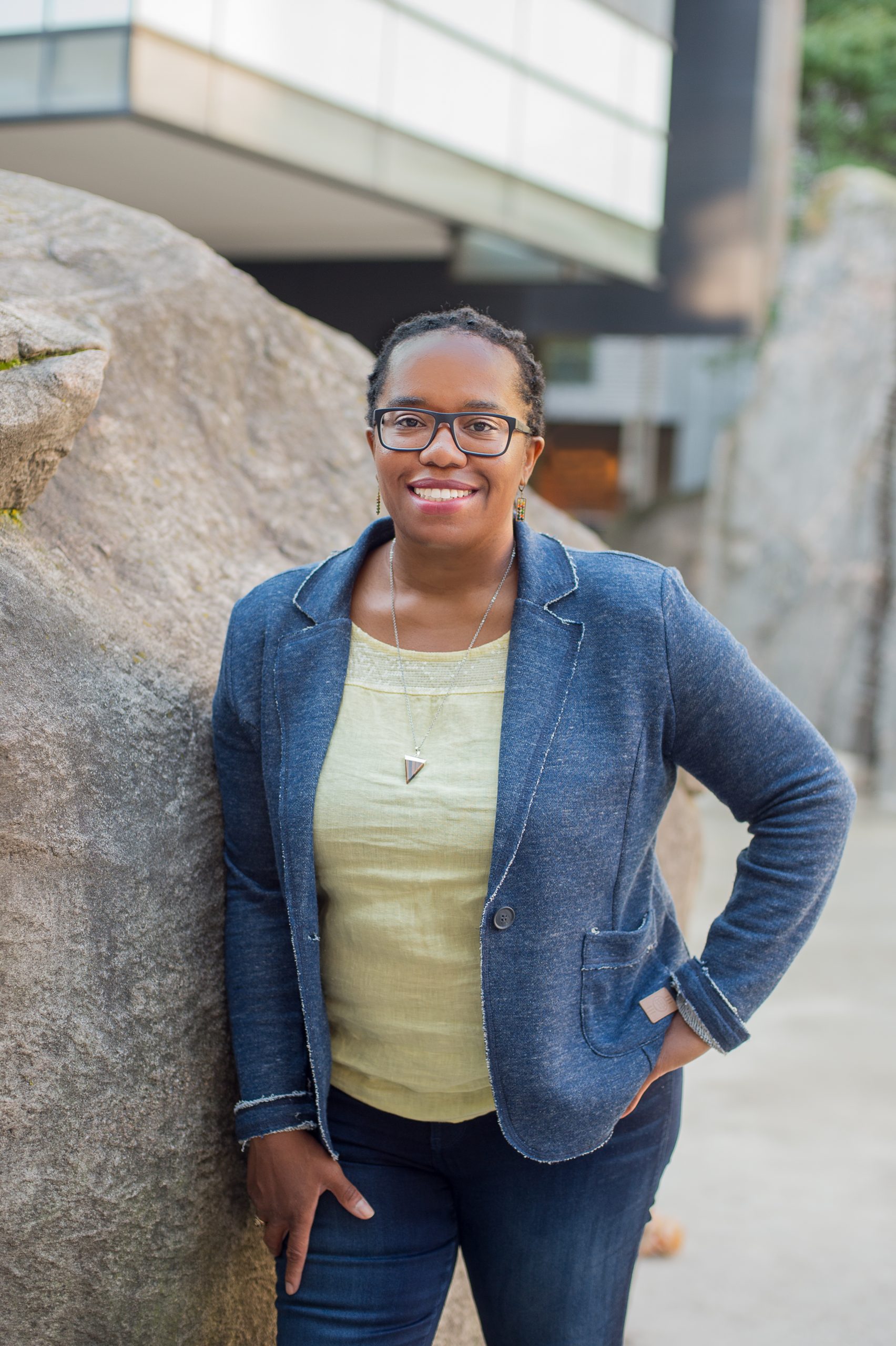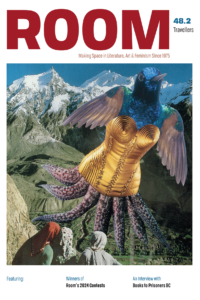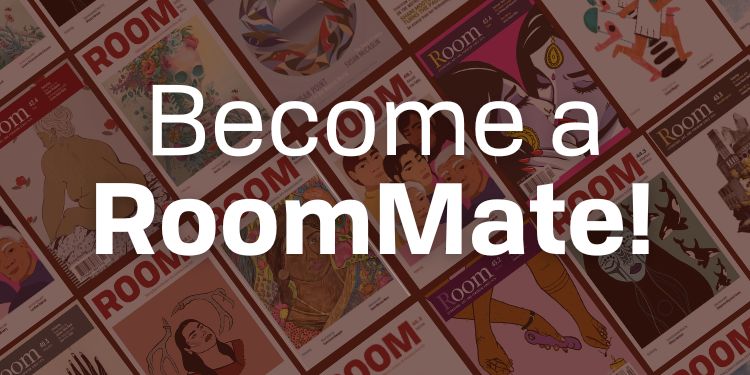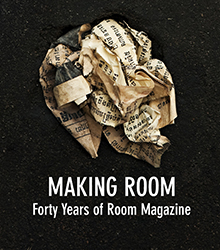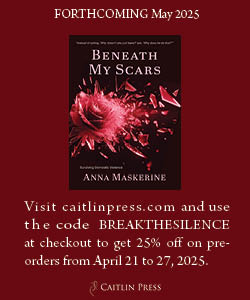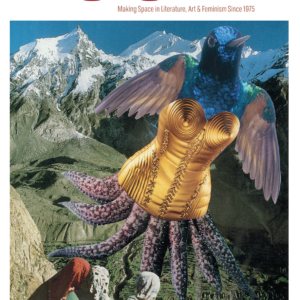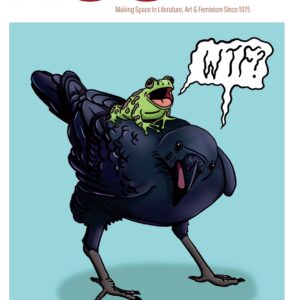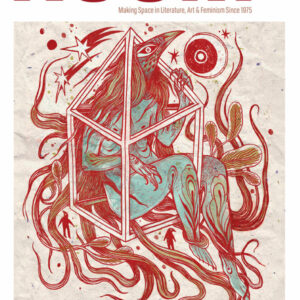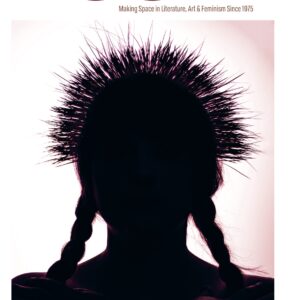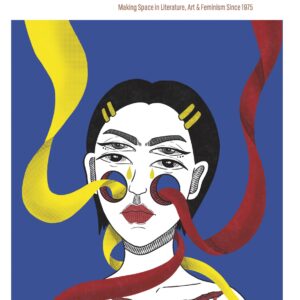After the tragic deaths of George Floyd, Breonna Taylor, Ahmaud Arbery, and Rayshard Brooks—unarmed African Americans killed by white police officers—the protests that followed, and all in the midst of the COVID-19 pandemic, the time for a global reckoning for centuries of anti-Black racism is now. Canada is no exception.
Many Canadian institutions are no longer willing to risk being on the wrong side of history. They are responding to calls for change and addressing anti-Black racism in ways that they might not have prior to the moment.
Most notably, in what became known as #JessicaMulroney, CTV announced that it was dropping Mulroney’s reality show, I Do, Redo, from its airwaves, just one day after Toronto writer and influencer, Sasha Exeter, who is Black, posted a 12-minute video on Instagram explaining that Mulroney had taken offence to a call-to-action that she posted about the Black Lives Matter Movement in the wake of Floyd’s killing. Cityline and Good Morning America also cancelled Mulroney from their line-up as a fashion expert.
Though no one was named in the post, Mulroney assumed that it was about her. In the video, Exeter explains that Mulroney subsequently threatened her because her “[white privilege] gave her the momentary confidence to come for [Exeter’s] livelihood in writing.” According to Kathleen Newman-Bremang in a Refinery29 post, Mulroney apologized three times publicly for her behaviour, while privately threatening to sue Exeter for libel.
As #JessicaMulroney circulated on the Internet, along with the hashtag #RacisminCanada, many drew parallels between it and another hashtag created in response to a white Canadian woman, Amy Cooper, who called the police on a Black man bird-watching in New York City’s Central Park. #AmyCooper, #FireAmyCooper, and #AmyCooperIsARacist also led to Cooper’s swift firing from her job.
There has never been a time in history when the hashtag response to anti-Black racism, and other movements such as #MeToo and #TimesUp against sexual violence, have played such a vital role in activist movements.
If we think back to the Black Power movement in the 1960s, which was bolstered by Tommie Smith and John Carlos, two African American athletes who had each raised a black-gloved fist during the playing of the US national anthem at the medal ceremony, during the 1968 Mexico City Olympics, what would that moment have become if it had been transformed into #BlackPowerSalute or #FightforJustice?
Hashtags and memes help many Black people navigate the politics of race in the twenty-first century. It is not that social media is itself a movement, but rather, digital platforms have enabled forms of interactive communication that give marginalized groups the ability to mobilize and disrupt the omissions, invisibilities, and blatant erasures that have, for too long, existed in the “real world”.
At the same time, the pace at which forms of digital activism move from one hashtag to another can leave even the most socially-conscious person feeling like they’re uninformed. Despite its disposability, digital activism has meant that when there is a moment of crisis following the tragic death of a Black person, the hashtag and/or meme frames not only the incident itself, but also how we talk about anti-Black racism, racial bias, and its counterpart, white fragility.
When did hashtag activism begin? What role do memes play in the digital movement? How does the evolution of the hashtag help us understand both its significance to digital communication, as well as in the evolution of contemporary Black activism?
The Evolution of the Hashtag
The first organized use of the hashtag dates back to the tragic death of Trayvon Martin in 2012, followed by Sandra Bland, Oscar Grant, Michael Brown, Eric Gardner, Tamir Rice, and dozens of other unarmed, African American men and women. These hashtags include #BlackLivesMatter, #SayHerName, #ICantBreathe, and #IfTheyGunnedMeDown. As digital slogans, they have become battle cries for protesting state-sanctioned acts of violence against Black people, but also policing in general.
In Canada, #AndrewLoku, #JermaineCarby, #AlexWettlaufer, #KwasiSkene-Peters, #Jean-PierreBony, #IanPryce, #FrankAnthonyBerry, #MichaelEligon, #EricOsawe, #ReyalJardine-Douglas, #JuniorAlexanderManon, and in 2020, #D’AndreCampbell and #RegisKorchinski-Paquet, (both of whom died at the hands of Ontario police services during the COVID-19 pandemic, and who also had mental health issues), triggered demands to #DefundThePolice in Canada.
While scholars like Angela Davis, Ruth Wilson Gilmore and many others, have been calling for prison abolition for decades, ever since Floyd’s death and the protests that have followed, #DefundThePolice has entered the mainstream. This hashtag became part of the “doing something” moment, and in some ways, engendered the conversation.
The invocation of the hashtag as a demand for the reallocation of funds, away from policing to health care, social services, and community services, means that revolutionary movements can no longer reside solely on the grounds where the revolution cannot be televised—as African American jazz poet and musician, Gil Scott-Heron, once proclaimed. Instead, it circulates online—24/7, 365 days of the year—and moves in and through space, and across geopolitical territories.
The digital hashtag first appeared in the late-1990s. In #Hashtag Activism, authors Sarah J. Jackson, Moya Bailey, and Brooke Foucault Welles explain that the “pound sign”, as it was called then, was used to group items in online conversations and chat streams. But in 2007, when Twitter user Chris Messina asked followers what they thought about using the sign to designate groups on the platform, his tweet became the catalyst for the ongoing evolution of the hashtag as a tool to thread conversations, people, and movements together.
Today, in addition to the hashtag being mobilized as a digital memorial for the loss of Black life, it also enables Black users on social media to challenge white people caught on smartphones, discriminating against Black people, or, in some cases, being outright racist. In these instances, humour has become another tool to disempower individuals, who, in the real world, hold a significant amount of power to restrict Black people’s access and/or movements. In this regard, “Black Twitter”, an online outlet for Black people to express our ideas and opinions, has taken a leading role in turning acts of anti-Black racism into actionable hashtags and memes, enabling Black people to respond in ways that are not often available in traditional media.
The first hashtag response to white racism occurred in 2015, when #StayMadAbby circulated Black Twitter in response to Antonin Scalia, a Supreme Court Justice who made comments about the supposed inability of Black students to graduate from universities he called “too fast”. His comments came during oral arguments for the affirmative action case, Fisher v. University of Texas. According to the HuffPost, the suit, filed by onetime prospective student Abigail Fisher, alleged that she was denied admission to the University of Texas at Austin because she was white, and that other, lesser qualified candidates were admitted due to their race.
In response, hundreds of Black graduates took to Twitter with the hashtag #StayMadAbby. They posted images of themselves clad in caps and gowns, and listed statistics to show that, contrary to Fisher’s claims, Black students account for a small percentage of the UT Austin student body.
Following the release of Beyoncé’s visual album Lemonade in 2016 and the song lyrics, “He only want me when I’m not there / He better call Becky with the good hair,” #BeckywiththeGoodHair emerged on Black Twitter. New York Times columnist Charles Blow even tweeted, “The mystery around #BeckyWithTheGoodHair is the 2016 version of #WhoShotJR,” a reference to the 1980 cliffhanger from season three of the nighttime soap opera, Dallas. Similarly, the Twittersphere also speculated that #BeckywiththeGoodHair was a not-so-subtle nod to her partner Jay-Z’s alleged marital affairs with non-Black women.
Since then, numerous other #Becky moments have circulated on the Internet, such as #BeckyWithTheBadGrades, which emerged as another way to describe Fisher’s alleged discrimination. In 2018, when a white woman named Jennifer Schulte called the police on two African American men, who had been using a charcoal grill in an area of a park in Oakland, California, that wasn’t designated for charcoal grilling, a local TV news station picked up the story, and Schulte quickly became known as #BBQBecky.
Other viral hashtags include #GolfcartGail, named after a white woman in a golf cart who called the police on a Black father who had been yelling instructions at his son during a youth soccer game in Ponte Vedra Beach, Florida, and then there’s #PermitPatty, a San Francisco white woman who lied when she told the San Francisco Chronicle that she was only pretending to call the police on an eight-year-old Black girl, selling bottled water without a permit in front of her house.
The hashtag #Karen (#KarensGoneWild and #KarenStrikesAgain), an extension of the “Can I speak to the manager haircut” meme, started in 2014. But following Cooper’s Central Park attack it quickly became part of the Black Twittersphere. An article in The Guardian even went so far as to ask prominent Karens how they felt about the memeification and hashtagging of their name.
“I spend a lot of time on Twitter, so I find it rather annoying,” said Karen Geier, a writer and podcaster from Toronto. “Anything you say, people can be like, ‘OK, well, whatever, KAREN’–but that’s not even how the meme is supposed to be used. It’s supposed to be about people who want to speak to the manager.”
The misuse of hashtags and memes is quite common. Most likely because of the pace at which they spread, especially in the case of memes.
According to Jannette L. Dates and Mia Moody Ramirez, authors of From Blackface to Black Twitter, memes are ideas, behaviours, or styles that quickly spread, mutating, or disseminating as germs do. The word “meme” dates back to 1976, when evolutionary biologist, Richard Dawkins, first introduced it. In the twenty-first century, memes appear on social media as a way for Black people to share viewpoints on various topics.
Meme culture, however, is often co-opted by white people. There has never been a time when so many Black women and men are called upon for representational “attitude” via a viral meme like they are in today’s digital culture. What is the politics of memeifying Black people?
Memes and the Rise of Digital Blackface
At the start of COVID-19, there were numerous memes featuring white celebrities that centered upon how “our” lives were changing during shelter in place orders, and the various ways that people were and were not coping with the changes. Memes such as Mad Men’s Donald Draper, “working from home for one day because you feel like it versus working from home for weeks because you have to,” and Oscar winner Dame Judi Dench’s meme where she tells viewers to “just keep laughing” while wearing a dog hat with flapping ears in a clip—viewed 5.4 million times and counting—seemed quite purposefully aimed at calming white people’s fears about the virus.
Vulture even compiled a “(Good) Coronavirus Jokes” list, followed by Esquire’s “Best Coronavirus Memes,” which they said was to make us all “a bit happier right now.” Insider.com then tried to make sense of it all by explaining that COVID-19-themed memes provided “comic relief and distractions amid times of uncertainty,” and that those creating these memes said that humour was critical to “bringing people together” and soothing global fears and worries.
Social distancing meant that people were spending more time online than ever before. Bell Canada even reported that home Internet usage was up to sixty percent higher than usual during the day and twenty percent higher at night during the first month of the pandemic.
At that time, just about everything was being memeified to quell collective panic (I am embarrassed to admit that I, too, watched the meme of two cats asking for food more than once). But, since racism does not go on a vacation, once Floyd’s murder happened, the playful “we’re all in this together” memes disappeared as social justice hashtags and videos took their place.
Prior to the pandemic there was a growing critical field of study that questioned how a reaction meme or GIF (Graphics Interchange Format bitmap image), especially those featuring Black people, act as a form of digital blackface, a twenty-first century term used to describe the use of a Black person, often a Black woman or gay Black male, posted by a non-Black person on their social media for the sake of making a point.
For example, the numerous eye roll GIFs of Real Housewives, NeNe Leakes (there are over 100,000 of them), and Viola Davis’ unimpressed smirk from How to Get Away with Murder that continues to circulate the Twittersphere. As well, Tituss Burgess, who plays “Titus Andromedon,” the id of Kimmy Schmidt on Unbreakable Kimmy Schmidt, has even been labelled the show’s “most meme-able character” for his numerous “Shocked” and/or “What?” expression memes paired with just the right amount of eye roll and hand gesticulations.
What are the racial, gender, and wider societal implications of non-Black people invoking the “too” anything imagery and “catch phrase” of Black women and/or Black gay men in online discussions? How do these GIFs and memes act as a shield to affirm, validate, and/or authenticate forms of white aggression as expressed through the Black body?
Just as hashtags have fundamentally changed how I show up on social media, memes and reaction GIFs have also played a pivotal role in my digital interactivity. I probably send someone a meme almost every day, and often it is of a Black woman. I never considered the racial implications of these digital images until a former white friend started to send me Black woman memes in our texting conversations. At first, I thought it was funny, and then I started to question why these memes would be called upon in our conversations. Why, in the digital world, do we permit these kinds of conversational addendums to take place?
In Algorithms of Oppression, Safiya Umoja Noble asserts that traditional media has long been rife with negative or stereotypical images of Black people, but that the Internet, as the locus of new media, “is a place where traditional media interests are replicated.” It is not a coincidence that memes and GIFs are almost always plucked from traditional media and are repurposed into a digital format. At the same time, the possibility of formally learning about racial stereotypes such as the Jezebel, Sapphire, and Mammy, does not exist in the designing of these images.
How many of the people who create and/or share a Black person meme are aware of histories of representation, stereotypes, and discourses on race and gender? I have a PhD and study this stuff for a living, and it took me a few years to say, “hey, I think there is something racist going on here.” So questions about the embedded meanings in these digital modes of communication need to be asked of everyone creating and circulating them.
It is virtually impossible to police the use of memes. On the one hand, there is something fun and expressive about Black woman memes; as a Black woman, I often say “yes” when I’ve found the right GIF on my phone to express, visually, what I’m trying to say, textually. But on the other hand, as digital technology scholar, Lisa Nakamura, reminds us, the Internet is used differently by different racial groups. Where for me, memes are part of a Black expressive culture, when used by non-Black people as a way to exaggerate and/or say something that they would not dare say for themselves, that’s where meme culture can become an arena where nineteenth-century racial logics continue to circulate in the twenty-first century.
In 2004, interdisciplinary artist, writer, and curator, Coco Fusco, observed that, “we like to see race even if we don’t consider ourselves racist.” This act of looking at racial difference still enthralls Western viewers, even if one is adamant that “they don’t see colour.” This explains why despite calling 9-1-1 to specifically report on an African American man, Amy Cooper told CNN, “I’m not a racist. I did not mean to harm that man in any way.” She saw race when she felt threatened by a Black man, but was unable to see racism when her actions, which she also apologized for, were called out as racist.
This contradiction makes the topic of anti-Black racism even more difficult to confront. How do you address the actions of a person who has harmed you when they don’t see the harm, but paradoxically, they are apologetic for that harm, whether real or perceived?
As White Fragility author, Robin D’Angelo, points out, “Talking directly about white power and privilege, in addition to providing much needed information and shared definitions, is also in itself a powerful interruption of common (and oppressive) discursive patterns around race. At the same time, white people often need to reflect upon racial information and be allowed to make connections between the information and their own lives.”
Will COVID-19 finally become the moment when white people reflect on race? In this regard, Malcolm Caldwell’s explanation of social epidemics is useful to think about.
In The Tipping Point, published twenty years ago, Caldwell uses multiple examples, one of them Hush Puppies—the classic American brushed-suede shoes with a lightweight crepe sole that reached their tipping point in late 1994 and early 1995—to explain how things can spread without a knowable root cause. Where the brand had been floundering up until that point, for some unknown reason, the shoes became hip in the clubs and bars of downtown Manhattan, and just like that Hush Puppies, were back in vogue.
For Caldwell, the best way to understand the tipping point for a brand, crime waves or unexpected spikes in social behaviours, is to think of them as spreading just like viruses do.
“They are clear examples of contagious behavior,” he writes, “No one took out an advertisement and told people that the traditional Hush Puppies were cool and that they should start wearing them. Those kids simply wore the shoes when they went to clubs or cafes or walked the streets of downtown New York, and in so doing exposed other people to their fashion sense. They infected them with the Hush Puppies ‘virus’.
In many ways, racism works the exact same way. It is nearly impossible to locate when someone was infected with racist ideologies, but thanks to Internet culture, we are finally able to locate how racist behaviours, like social epidemics, can spread.
The Revolution Will be Hashtagged
While the hashtag offers some form of liberation, the Internet can be a very lonely place for Black people, not just through meme culture but also emojis. In a 2019 New York Times article, Sandra Garcia noted that as of now, there are 2,823 emojis recognized by the Unicode Consortium, the non-profit that provides standards for text on the Internet and oversees emojis, but there are no emojis of any person with an Afro, even though symbols exist for women and men with long and short hair, curly and straight hair, and blond, black, and red hair.
Similarly, University of Alberta professor Jonathan Cohn, in an article for The Conversation, observed that when he searched for “woman” or “girl” via Google’s image search, the vast majority of the results were pictures of thin white women (with the notable exceptions being a woman in a hijab, a white woman without a nose and a disabled girl). When I did this search, the results were basically the same.
In the early days of the Internet, there were technological utopians like Douglas Rushkoff who believed that the new technology would create a global village where the world would become happier and freer with the advancement of technology. Today, Rushkoff has become one of the loudest critics of the Internet pointing to the ways in which it mediates our connections making them less satisfying. In other words, texting, emailing or video conferencing technologies like Zoom or Skype cannot not replicate the same kind of connections made possible with face to face, in-person communication.
At the same time, white technology theorists like Rushkoff often fail to recognize the ways in which digital technologies, inasmuch as they can aid in the circulation of racist and sexist material that can be used to erode our civil and human rights, have empowered Black and Indigenous people to crash the normative system that is whiteness.
Hashtags and memes are the Black Power salute of our time. The revolution doesn’t need to be televised anymore because the hashtag has got it covered. Black Power has entered the digital age, and there’s no #TurningBack.
